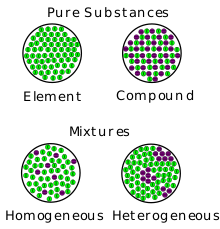Dalia Savy
Kanya Shah
Dylan Black
AP Chemistry 🧪
269 resourcesSee Units
What are Solutions?
Solids and liquids are frequently combined to make solutions.
Recall that solutions are homogeneous mixtures meaning that the particles are evenly mixed. In a solution, the macroscopic properties do not vary throughout the sample. For example, a solution may be salt dissolved in water. When salt🧂 dissolves in water💧, it is spread throughout in a homogeneous mixture.
Solutions form when one substance disperses uniformly throughout another. The attractive interaction of solvent molecules with solute is called solvation.
When the solvent is water, the interaction is called hydration. In essence, solutions are a kind of mixture. While solids dissolved in liquids are probably the most common type of solution, it is not the only type. Actually, every phase of matter can serve as either the solute (thing being dissolved) or the solvent (thing doing the dissolving).

Image Courtesy of Pinterest
What is a Mixture?
In AP Chemistry, a mixture is usually referred to a heterogeneous mixture in which the macroscopic properties depend upon the location in the mixture. An example of a mixture would be something like soil🌱, where you can actually see what is inside of the mixture, and macroscopic properties matter.
This image may help you understand the difference between a heterogeneous and homogeneous mixture:

Image Courtesy of Wikipedia
Representing Solution Composition
When discussing solutions, we usually refer to concentrations of a solute dissolved in a solvent. There are tons of ways to calculate concentration, but the most important and most commonly used form of concentration is molarity (M).
Molarity is formally defined as the number of moles of a solute dissolved in 1 liter of solvent. Thus, the formula for molarity is M = moles of solute/liters of solution, or mol/L. For example, if we have a solution that contains 24 moles of HCl dissolved in 2L of water, the molarity is 24/2 = 12, or 12M HCl as is commonly written.
Note that moles is only of the solute while liters is both the solute and solvent, which together are the solution.
Extra Information
There are other ways of calculating concentration such as percent by mass and molality, but those won't be tested on the AP Exam. Let's go over it anyways just in case you pursue chemistry past this course (otherwise you can completely skip this section)!
Mass percent = mass of solute / mass of solution x 100
Molality(m) = moles of solute / kilograms of solvent
Forming a Solution
There are a few steps to forming a solution and each requires a certain amount of energy.
- Expand the solute (separate the solute into individual components)
- Expand the solvent (breaking IMFs to make room for the solute)
- Solute-Solvent Interactions (forming IMFs between the solute and the solvent)
Sometimes, the first two steps can even be skipped.
Image Courtesy of Fiveable Unit 3 Review
Diluting Solutions
Decreasing the concentration of a solute in solution is called diluting the solution. When we dilute a solution we have two options: remove solute or add solvent. Typically, removing solute is either completely impossible or difficult to control. Imagine having to accurately remove a certain mass of salt🧂 from a collection of salt water. It's essentially impossible! So, chemists often simply add solvent to the solution to get a lower molarity. Why does this work? Well, recall the definition of molarity: M = mol/L.
If we lower the moles of solute, of course M will get lower, but similarly, if L decreases, M will increase too! Thus, adding solvent will lower concentration.
We can calculate exact volumes using the equation: M1V1 = M2V2, where M1 and V1 are the molarity and volume of the original solution and M2 and V2 are the molarity and volume of the diluted solution.
How does this work?
M1V1 = M2V2 works because molarity * liters = mols (Moles/Liter * liter = moles) and since moles remains constant throughout, M1V1 (the number of moles in the original solution) must necessarily equal M2V2 (the number of moles in the diluted solution). The only difference is in M1V1 and M2V2 that molarity and volume are changing proportional to each other.
You can just plug in the numbers and easily get any value you are solving for🥳!
Browse Study Guides By Unit
⚛️Unit 1 – Atomic Structure & Properties
🤓Unit 2 – Molecular & Ionic Bonding
🌀Unit 3 – Intermolecular Forces & Properties
🧪Unit 4 – Chemical Reactions
👟Unit 5 – Kinetics
🔥Unit 6 – Thermodynamics
⚖️Unit 7 – Equilibrium
🍊Unit 8 – Acids & Bases
🔋Unit 9 – Applications of Thermodynamics
✏️Frequently Asked Questions
✍️Free Response Questions
🧐Multiple Choice Questions
📆Big Reviews: Finals & Exam Prep

Fiveable
Resources
© 2023 Fiveable Inc. All rights reserved.